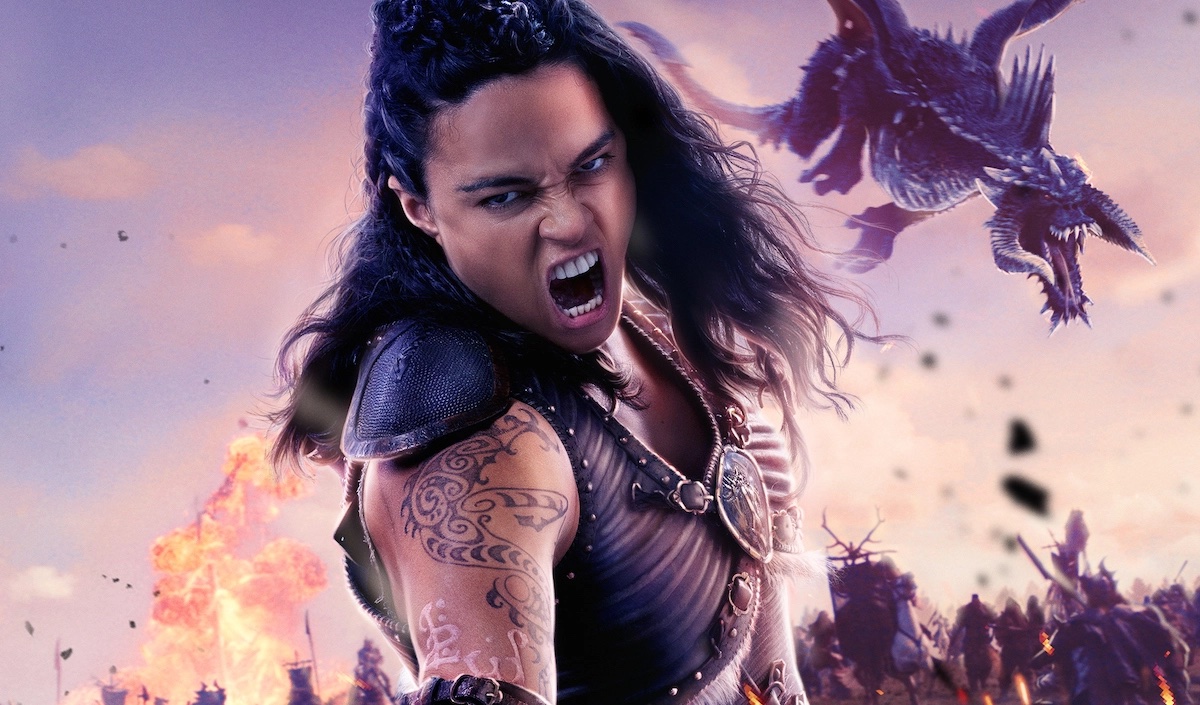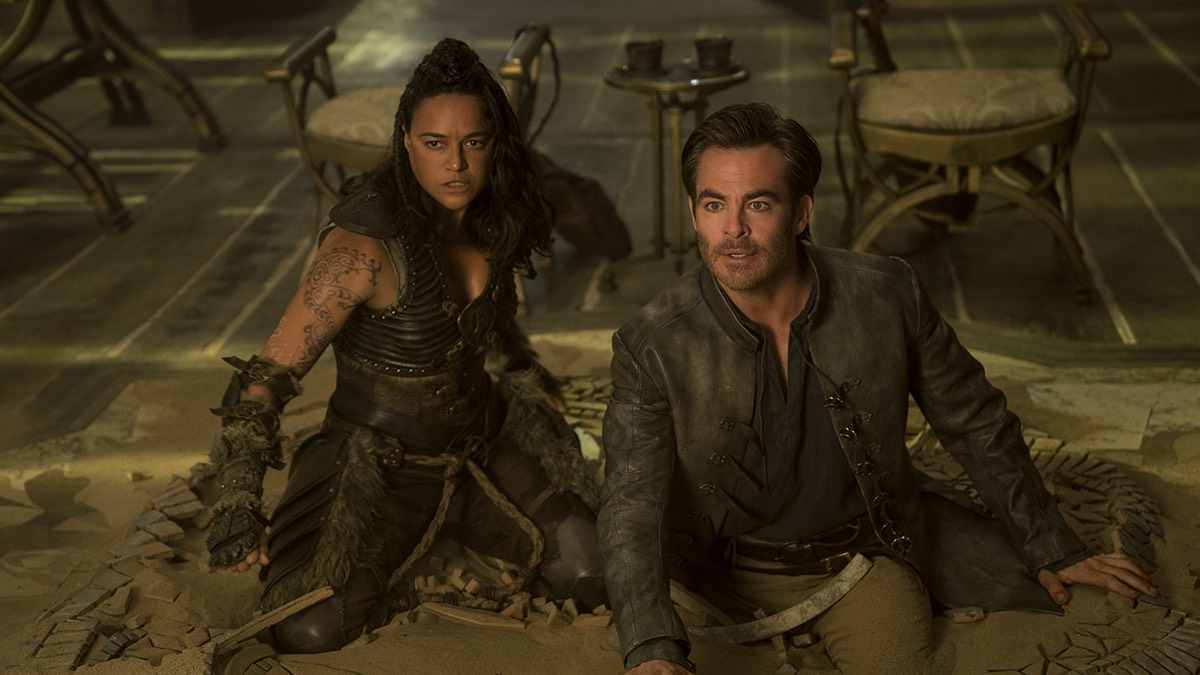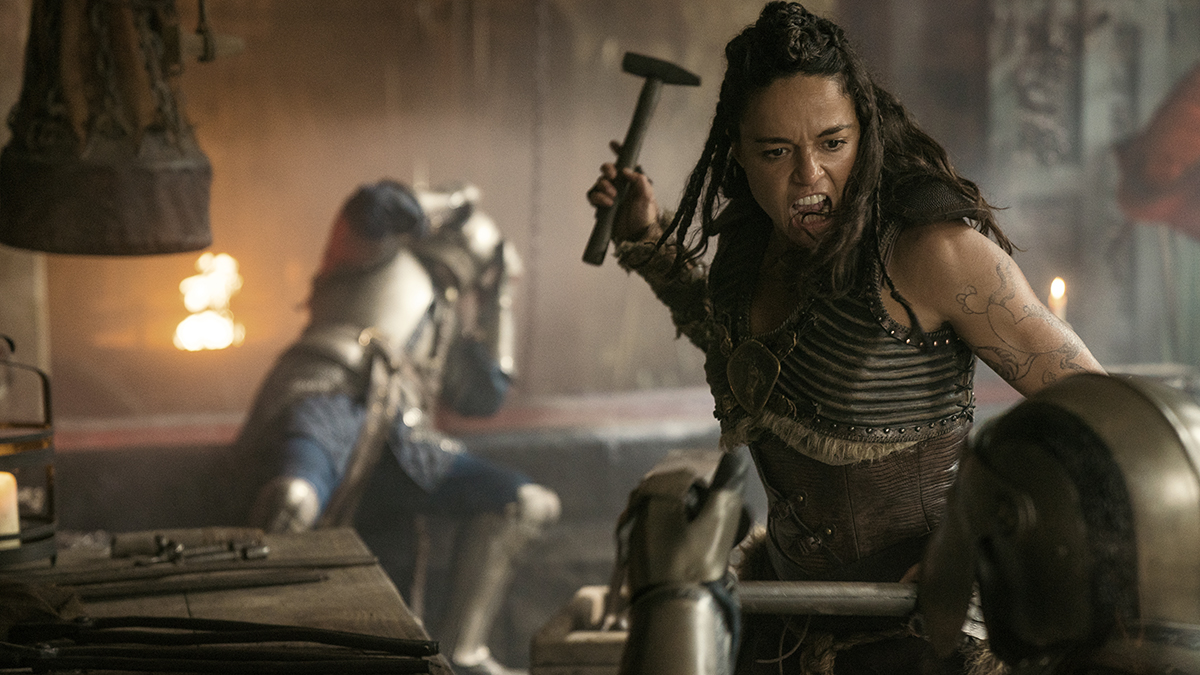Holga’s Tattoos in ‘Dungeons & Dragons: Honor Among Thieves’ Look Awfully Familiar

There’s so much to love about Holga, the exiled barbarian played by Michelle Rodriguez in Dungeons & Dragons: Honor Among Thieves. Holga is a badass bitch with a heart of gold, and she looks fantastic in her leather and fur armor.
There’s one detail about Holga that especially caught my eye. As a barbarian, Holga covers her arms in tattoos whose meaning and significance we can only guess at. However, the tattoos, which depict twisting, stylized hoofed animals, bear a very strong resemblance to tattoos I’ve seen in real life—and their owner is 2,500 years old.
Here are a couple of photos for reference:


So where did Holga’s tattoos come from? Although I can’t confirm it, I’m pretty sure they’re inspired by an ancient Siberian woman known as the Ukok Princess.
Who is the Ukok Princess? All about the possible inspiration for Holga’s tattoos
In 1993, Russian archaeologist Natalia Viktorovna Polosmak excavated a tomb in the steppes of the Republic of Altai, Russia. Inside the tomb, Polosmak and her team found a mummified woman with several large tattoos on her arms and legs. The woman was determined to be a member of the ancient Pazyryk culture, and based on the items buried with her, Polosmak and other researchers theorized that she may have served as a priestess. Although the name “Ukok Princess” caught on, there doesn’t seem to be any evidence that she was literally a princess.
The woman’s tattoos are the most striking feature of the burial site. Although we may never know what exactly the tattoos meant to their owners, Polosmak told The Siberian Times in 2012 that Pazyryk tattoos were “a language of animal imagery, used to express some thoughts and to define one’s position both in society, and in the world. The more tattoos were on the body, the longer it meant the person lived, and the higher was his position.”
If you click through to the article, you’ll find an artist’s recreations of the Pazyryk woman’s tattoos. Check out the scalloped edging on the animals, the spiral-like designs on their bodies, and most importantly, the prominent, upside-down hooves. Come on—you can’t tell me you don’t see the resemblance to Holga’s tattoos. I reached out to Paramount for comment, and I’ll update this article if I hear back. For now, though, I’m pretty sure the filmmakers got their inspiration from Pazyryk designs.
What are the ethical issues of modeling a character’s look off of another culture’s symbols, which you may not fully understand? That’s a big question—but it definitely hasn’t stopped countless people from recreating Pazyryk tattoos on themselves. For now, though, any archaeology nerds who spotted the resemblance in Dungeons & Dragons should pat themselves on the back.
(featured image: Paramount Pictures)
Have a tip we should know? [email protected]
